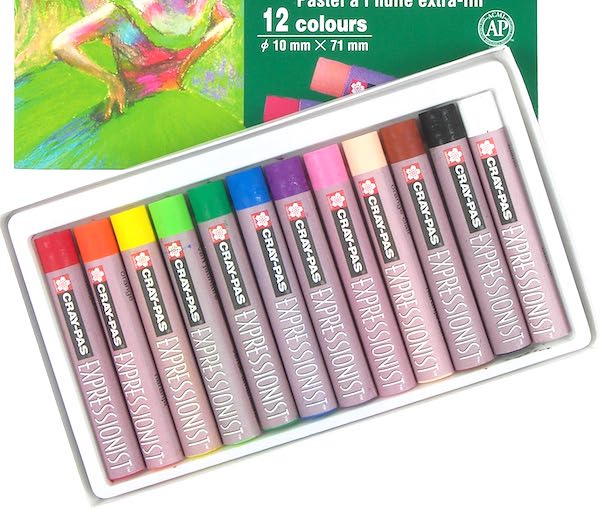
Sometimes various types of art media are confusing, especially when they have similar names. One common source of confusion is between oil pastels and traditional pastels. Although they share the word ‘pastel’, these two mediums are distinct in their composition, application, and results. Let’s look into the reasons why oil pastels aren’t pastels and explore their unique characteristics.
What Are Traditional Pastels?

Traditional pastels, also known as soft/hard pastels or chalk pastels, have a long history. First introduced in the 16th century, they became exceedingly popular in the 18th and 19th centuries, and are still a favorite of artists today.
Traditional pastels consist of pigment mixed with a filler and a binder. They have a chalky texture. When rubbed on paper, they leave behind a small amount of powder, which is hazardous if inhaled over a long period of time. Traditional pastels leave a non-shiny, matte luster.
A Short History of Oil Pastels
Cray-Pas: the First Oil Pastel

First, let’s look at a short history of oil pastels. Surprisingly, oil pastels are a relatively new art medium. Their history goes back to the early 20th century. A Japanese company, Sakura, manufactured the first oil pastel called Cray-Pas in 1925. This highly respected brand still exists today.
Picasso and Sennelier Oil Pastels

In 1949, Pablo Picasso looked for a medium that would combine the ease of use of crayons with the richness of oil paint. He wanted something easily portable and similar to the luster and consistency of oil paint for quick studies or underdrawings away from the studio. Cray-Pas caught the interest of Picasso, but the import restrictions of World War 2 prevented him from obtaining them. He turned to a French Company, Sennelier, and asked that they make an artist grade oil pastel. And as they say, the rest is history.
Why Oil Pastels Aren’t Pastels: Composition
What Are Oil Pastels?
Oil pastels look like a wax crayon, but are very different. An oil pastel stick consists of pigment mixed with a non-drying oil and wax binder, resulting in a smooth, buttery consistency and vibrant color. The softness allows for easy blending and layering, while the saturated color adds energy and excitement to the artwork. Made from oil and wax, oil pastels don’t leave over a powdery residue. These unique properties makes oil pastels a favorite among artists.
Why Oil Pastels Aren’t Pastels: Artistic Effects

Oil pastels differ from chalk pastels in their artistic effects. Oil pastel artwork has a luster and shine similar to an oil painting. Thick applications of the medium produce an impasto-like texture. In fact, viewers sometimes confuse an oil pastel artwork with an oil painting. However, unlike an oil painting, oil pastel never really dries but has a slightly sticky feel.
Conclusion
Oil pastels and traditional pastels are very different in composition and artistic effect. Both have distinct advantages for artists and art enthusiasts alike. Understanding the difference between them helps appreciate these media even more.

What’s in a name? – Exploring the Nuances of 5 Similar Types of Art Movements
Discover more from Rhonda Roth Art
Subscribe to get the latest posts sent to your email.